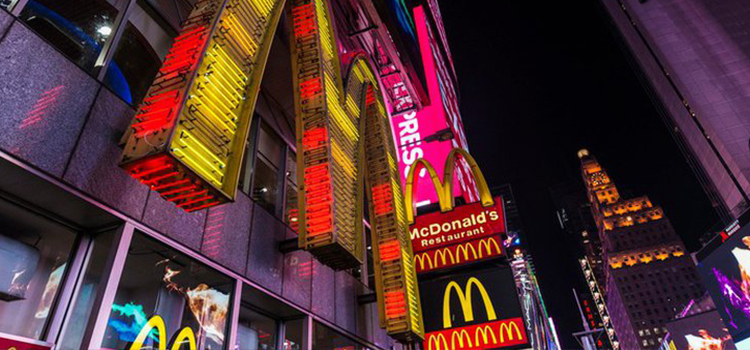
Getting customers to try new items at restaurants can be a challenge, as some might either be hesitant or they simply don’t see the appeal of the item at that particular QSR. One McDonald’s I visited recently found a simple and effective way to push a new item with its menu board.
There are three types of customers at quick-serve restaurants: those that only want the tried and true, the ones who always want something new and everyone else who falls somewhere in between these extremes. This is where QSRs take a risk when they introduce a new menu item. It could be a big hit or a huge flop.
The biggest problem is simply getting customers to try the new item, as some might either be hesitant or they simply don’t see the appeal of the item at that particular QSR. One McDonald’s I visited recently found a simple and effective way to push a new item with its menu board.
This McDonald’s featured an outdoor menu board with two content areas. Most of the board’s content was taken up by the menu itself but in the lower left corner there was an order confirmation section, which displayed the customer’s order back to them along with any customizations and the final price. However, this particular confirmation section also featured a different message before the customer even began their order.
It said, “If we don’t ask you about our chicken sandwiches, it’s free on your next visit!” This is a reference to McDonald’s new crispy and spicy chicken sandwiches, the QSR’s attempt to compete with Chic-fil-A and Popeyes in the chicken sandwich realm. At this McDonald’s, the employees seemed to be on script as the employee immediately asked me if I wanted to try the item.
There is a certain genius to this advertising tactic. Let’s break it down. First of all, the menu board does obviously feature the chicken sandwiches front and center, but some customers may not even look at the menu if they already know what they are getting. The only thing they will be looking at is the menu confirmation screen since it is straight ahead from your car’s window, so this acts as a secondary reinforcement for the item.
Second, the menu board presents an opportunity for free food, which few customers will turn down. It makes them active listeners to ensure that employees mention it or not.
Third, this acts as a good training program for employees since customers themselves will remind the employees if they forget.
Finally, this menu board presents a clear call to action, to either come back for a free chicken sandwich or to try the sandwich for themselves.
McDonald’s accomplished all of this with one single sentence in the lower left-hand corner of its menu board. This is proof that digital signage content doesn’t have to be fancy or complicated to be effective. It just has to grab a viewer’s attention and have a clear call to action. Do these two things and your signage is far more likely to succeed.
Bradley Cooper. (2021, May 25). Digital Signage Today. Retrieved from https://www.digitalsignagetoday.com/blogs/mcdonalds-makes-upselling-simple-with-digital-signage/?utm_source=DST&utm_medium=email&utm_campaign=EMNA&utm_content=2021-05-25

